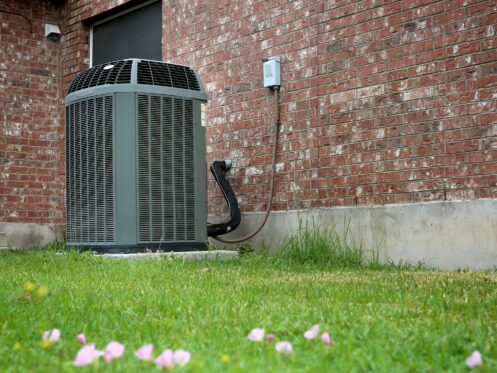If you’re in the market for a new air conditioning system, one factor you may come across is SEER. You may be tempted to simply ignore it. However, we don’t suggest that, as a unit’s SEER rating can have a big impact on your summertime cooling bills. Check out this mini-guide to SEER ratings so that you can be informed and pick the best system when you shop for your next AC replacement.
What Is SEER?
SEER stands for seasonal energy-efficiency ratio. This is a measurement that depicts a potential unit’s total cooling output for a single cooling season over the total energy it used to create the cold air. The higher a unit’s SEER rating, the more energy-efficient its operation.
The Introduction of SEER2
While SEER was the standard for many years, in January of 2023, the SEER rating standard was upgraded to SEER2. The HVAC industry pointed out a major gap in the traditional SEER testing standards. The old testing procedure only tested the cooling system under optimal conditions.
SEER2 testing standards now accommodate testing in conditions more similar to homes. The outcome of SEER2 is that ratings more accurately depict a system’s performance in the real world. Nowadays, every air conditioning system will have a SEER2 rating. In general, one SEER for an older unit is equal to about .95 SEER2 for a newer unit.
Minimum Standards
The U.S. Department of Energy (DOE) implemented new minimum SEER2 standards for air conditioning systems that are based on where you live in the country. Those living in the northern regions must purchase an AC unit with a minimum rating of 14, while those in the southern regions need a unit with a minimum SEER2 rating of 15. HVAC installers may no longer install an air conditioning system that doesn’t meet these minimum SEER2 rating standards.
Standard vs. High-Efficiency Units
Air conditioning system manufacturers have two main classes of AC units based on their SEER2 standards. The first is standard efficiency units that offer the most affordability for the average homeowner. These have a SEER rating ranging from 14 to 17. The second class is high-efficiency AC units with a rating of 18 to 26 or more. These units cost more upfront but provide the best long-term energy savings for consumers.
How SEER2 Can Impact Your Buying Decision
When purchasing a new air conditioning system for your home, SEER2 ratings are definitely a factor you need to consider. A unit with a higher SEER2 rating will not only reduce your energy bills but also your home’s environmental impact. Many of the high-efficiency models come with benefits like variable-speed motors that can better regulate your indoor temperature for optimal comfort.
Additionally, most tax credits and local rebates available for homeowners set minimum SEER2 requirements for participation eligibility. In general, AC units with a high SEER2 rating can make you eligible to receive higher rebates and credit amounts. These incentives can help you recoup some of the upfront cost of your new system.
Do You Have to Upgrade?
One common question homeowners have when they learn about the SEER2 AC minimums established by the DOE is whether they’re required by law to upgrade their outdated air conditioning system. The short answer is no, you don’t need to upgrade. However, realize that continuing to run an air conditioning system with a lower SEER2 rating could cost you a bundle on your energy bills.
Benefits of Upgrading
When you opt for upgrading your outdated air conditioning system to one that meets the new SEER2 minimum efficiency standards, it comes along with many great benefits. You can enjoy more energy savings throughout the summer months and better indoor comfort.
A new system will come with a brand-new warranty that will cover unexpected repair issues, which can go a long way in giving you peace of mind. Newer units are also much less likely to experience a breakdown as compared to their outdated AC unit counterparts. You could potentially enjoy a nice tax credit and a one-time credit on your utility bills when you upgrade.
Many new systems come integrated with smart features that can make your system even more convenient and energy-efficient to use. For example, energy usage tracking allows you to see in real-time how adjustments to your thermostat’s settings can impact your cooling system’s energy usage.
Reliable AC Installation Service
Of Course! Heating and Cooling offers reliable AC services in the Calimesa, CA area. In addition to brand-new AC installations, we can also assist with all your AC replacement, repair, and maintenance needs. Just phone our office today to schedule your next service consultation.

